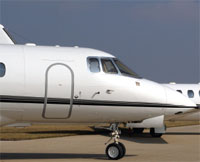NICE Systems Ltd. recently announced that Transnet Freight Rail, the leading provider of logistics and the largest rail operator in South Africa, has decided to standardize on NICE, undertaking a multi million-dollar project to implement NiceVision Net, NICE's end-to-end solution for IP video security.
Intelli-Check/Mobilisa Inc. recently announced that it will be launching its latest product, the IM 2700 -- Transportation Worker Card Reader at GovSec, U.S. Law and Ready.
Before Sept. 11, 2001, perimeter security provided an extra barrier of protection for an airport and its people—typically from hijackers and vandals. Although that is still true, there is now an added threat. Today, we cannot afford to let a terrorist or attacker get near airport facilities, people or passengers. In all too many cases, getting close is all they have to do.
The Port Authority of Los Angeles has contracted with Unisys Corp. to design and manage an identification and access control system, using smart card and biometric technologies, to identify workers who require access to restricted areas in the port.

If you don’t think the aftermath of Sept. 11, 2001, continues to have strong repercussions throughout the world, then you haven’t traveled much in the last six years. Security is still the word du jour—perhaps even more so as time goes on. Transportation venues continue to protect themselves from terrorist threats.
- By Jeffrey Lynn
- Mar 18, 2008
One of the first reactionary attempts to bolster security after 9/11 occurred at airports. Immediately after air service was reinstated, the public saw uniformed Marines armed with M-16s at every security checkpoint, concrete barriers at each entry point, security guards ransacking passengers’ luggage and, of course, taller fences going up around airfield perimeters. As with most things in life, an unexpected event usually generates an unexpected— and sometimes irrational— response. Such was the case with the nation’s aviation facilities.
- By Barry Willingham
- Mar 03, 2008
The last thing you want to find out while flying from one city to another is that airport security has been compromised. With so many people choosing flights as a preferred mode of transportation, airport security is paramount.
- By Ralph C. Jensen
- Jan 03, 2008

Towering high-rises, sprawling college campuses and mass transit hubs can all have hundreds or thousands of people occupying them at any given moment. When a crisis emerges, it’s critical to protect lives, and that job becomes difficult when people are spread throughout a facility or across a wide area.
- By David George
- Jan 03, 2008

Today’s airports are at the frontline of homeland security. Checking for shoe bombs, banned liquids and suspected terrorists are part of the daily routine for airport security personnel. In fact, airport vulnerability has become such an issue that the Department of Homeland Security assigns the airline industry its own threat level designation. For example, airports can be assigned to threat level orange, meaning “High Risk of Terrorist Attacks” while the rest of the nation is at yellow, or “Elevated Risk.”
Transit and shipment systems crisscross the country above and below Americans at hurried rates, moving millions of passengers and tons of freight each day. Above us, the active airways, often represented by blinking dots on a radar screen, nourish the nation's commerce and travel. Yet, this same frantic flow makes the country's circulatory system difficult to secure and, thus, attractive to attackers.